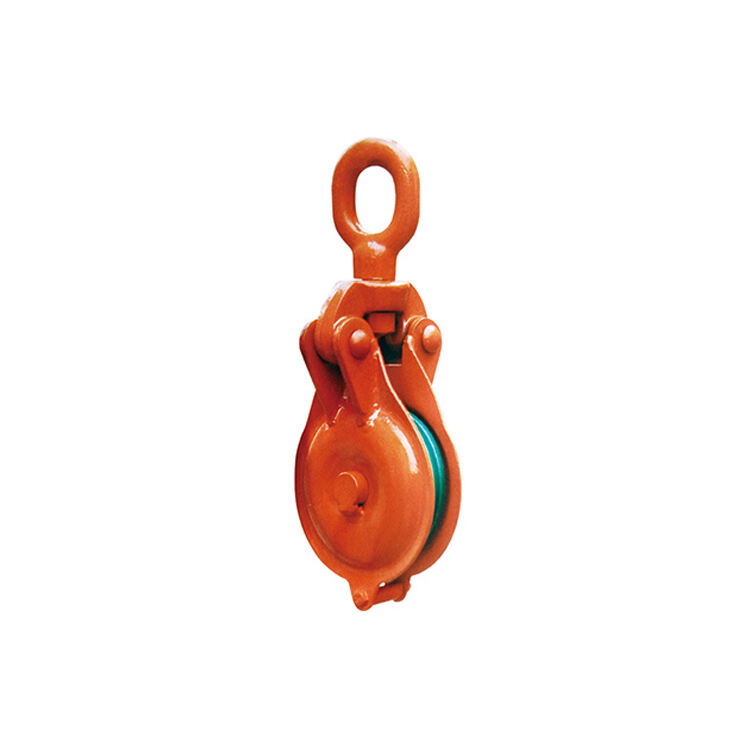የቤት ውስጥ ሥራዎች ጭነቱ ቀለል ያለ እንዳይመስል ያደርጋል፤ ነገር ግን ከፍ ከማድረግ ይልቅ ወደታች እንድትጎትት ያደርግሃል። የጭነት መቆጣጠሪያ ከባድ ነገሮችን ለመሸከም የሚያስፈልጉትን ነገሮች ለመሸከም የሚረዳ የቤት ውስጥ ሥራዎች
ቋሚ ፒሊ ምንድን ነው?
ቋሚ ፑሊየስ
አንድን መሣሪያ በሚጠቀሙበት ጊዜ አንድ ቦታ ላይ የሚቆይ ቀላል ማሽን ነው። ገመዱን ስትጎትቱ አይንቀሳቀስም። ከዚህ ይልቅ የጉልበትህን አቅጣጫ በመቀየር ነገሮችን ለማንሳት ይረዳሃል። አንድን ነገር ወደ ላይ ከመነሳት ይልቅ ገመዱን ወደ ታች መጎተት ትችላለህ። ለሥራው አዎንታዊ አመለካከት ይኑራችሁ ይሁን እንጂ ቋሚ የሆነ ሾጣጣ ጭነቱን ለማንሳት የሚያስፈልገውን ኃይል አይቀንሰውም። ይህ ደግሞ ሂደቱን ይበልጥ ምቹ ያደርገዋል።
ቋሚ ሹካ እንዴት ይሠራል?
የኋላ ኋላ የሚደረግ እንቅስቃሴ አንድ ሰው አንድን ገመድ አንድ ጫፍ ላይ አጣብቆ ሊነሳው ለሚፈልገው ነገር ይጥለዋል። ከዚያም ሌላውን ጫፍ ታነሳለህ። የቤት ውስጥ ሥራዎች ገመዱን የምትጎትተው ርቀት፣ ዕቃው ከሚንቀሳቀስበት ርቀት ጋር ይዛመዳል። ይህ ስርዓት ሜካኒካዊ ጥቅም አይሰጥም፣ ነገር ግን የመነሳት ሂደቱን ቀላል ያደርገዋል፣ ምክንያቱም የስበት ኃይልን ለጥቅምህ እንድትጠቀምበት ያስችልሃል።
ቋሚ የፕሊስ አጠቃቀሞች ምሳሌዎች
ቋሚ የፎቶ ማሽኖች በዕለት ተዕለት ሕይወት ውስጥ በሁሉም ቦታ ይገኛሉ። የኋላ ታሪክ፦
የሰንደቅ ዓላማዎች
ባንዲራውን በሰንደቅ ዓላማ ላይ እንደማንሳት አስቡ። በድንጋዩ አናት ላይ ያለው ቧንቧ ሰንደቅ ዓላማውን ለማንሳት ገመዱን ወደታች እንዲጎትቱ ያስችልዎታል። ያለ ሾጣጣው ወደ ምሰሶው መውጣት ወይም ባንዲራውን ለማንሳት ሌላ መንገድ መፈለግ ይኖርብዎታል። የቤት ውስጥ ሥራ
የመስኮት መጋረጃዎች
የመስኮት መጋረጃዎች ብዙውን ጊዜ ቋሚ የፕሊስ ስርዓት ይጠቀማሉ። የሽቦውን ገመድ ስትጎትቱ የሽቦው ገመድ መጋረጃውን ለማንሳት ወይም ለማውረድ ይረዳል። ይህ ንድፍ ብዙ ጥረት ሳያደርግ የብርጭቆዎቹን ቦታ ለመቆጣጠር ያስችልሃል። ይህ ተንቀሳቃሽ የቤት ውስጥ መገልገያዎች የዕለት ተዕለት ስራዎችን እንዴት እንደሚያመቻቹ ተግባራዊ ምሳሌ ነው።
ተንቀሳቃሽ ሹራብ ምንድን ነው?
ተንቀሳቃሽ ፑሊየስ
ተንቀሳቃሽ ሾጣጣ ከጫኑት ጭነት ጋር አብሮ የሚንቀሳቀስ ሾጣጣ ነው። ከተስተካከለ ሾጣጣ በተለየ መልኩ በአንድ ቦታ አይቆይም። ከዚህ ይልቅ በቀጥታ ሊነሡት በሚፈልጉት ነገር ላይ ይጣበቃል። የጭነት ክብደትን በማሰራጨት ይህ ሾጣጣ በተለይ ከባድ ነገሮችን በሚይዙበት ጊዜ ጠቃሚ ሆኖ ያገኙታል። ይህ ደግሞ የሜካኒካል ጥቅም ያስገኝልናል፤ ይህም የማንሳት ሥራዎችን ቀላል ያደርገዋል።
ተንቀሳቃሽ ሹካ እንዴት ይሠራል?
የጭነት መጫኛ አንድ ሰው በገመድ ላይ የሚጣበቅበት መንገድ ጭነቱ ከጎማው ላይ ተንጠልጥሏል። የኋላ ኋላ የሚደረግ እንቅስቃሴ ይህ ዘዴ የቁሳቁሱን ክብደት በመገጣጠሚያዎቹ መካከል በመከፋፈል የሚያስፈልገውን ጥረት በግማሽ ይቀንሳል። ለምሳሌ ያህል፣ ጭነቱ 100 ፓውንድ ከሆነ ለመነሳት 50 ፓውንድ ብቻ ኃይል መጠቀም ያስፈልጋል። የኋላ ታሪክ
ተንቀሳቃሽ የፕሊስ አጠቃቀም ምሳሌዎች
ተንቀሳቃሽ የሽቦ ማሽኖች በብዙ ኢንዱስትሪዎችና እንቅስቃሴዎች ውስጥ ቁልፍ ሚና ይጫወታሉ። የቤት ውስጥ ሥራዎች
የግንባታ ክሬኖች
የግንባታ ክሬኖች ብዙውን ጊዜ ከባድ የግንባታ ቁሳቁሶችን ለማንሳት ተንቀሳቃሽ ሹካዎችን ይጠቀማሉ። የኋላ ታሪክ፦ የኋላ ታሪክ ተንቀሳቃሽ የሆነ የጭነት መሽከርከሪያ የሚፈለገውን ኃይል ይቀንሳል፤ ይህም ሠራተኞች ግዙፍ ሸክሞችን በአስተማማኝና ውጤታማ በሆነ መንገድ እንዲንቀሳቀሱ ያስችላቸዋል። የኋላ ታሪክ፦ የኋላ ታሪክ ታሪክ
የዚፕላይን ስርዓቶች
የዚፕላይን መስመር በzipline ስትጓዙ ፒሊው ከኬብል ጋር አብሮ ይጓዛል። ይህ አሠራር ለስላሳና አስደሳች ጉዞን ያረጋግጣል። የኋላ ኋላ መጎተት ይህ ተንቀሳቃሽ ፒሊዎች የመዝናኛ እንቅስቃሴዎችን እንዴት የበለጠ አስደሳች እና ተግባራዊ እንደሚያደርጉ ፍጹም ምሳሌ ነው።
በቋሚና በተንቀሳቃሽ ሹካዎች መካከል ያለው ልዩነት
ተግባር
የኃይል አቅጣጫ ከጉልበት መቀነስ ጋር
በቋሚና በተንቀሳቃሽ ሾጣጣ መካከል ያለው ዋነኛ ልዩነት የሚገኘው እንዴት እንደሚሠሩ ነው። የኃይል አጠቃቀምን ለመቀየር የሚያስችል ቋሚ ሹካ አንድን ነገር ወደ ላይ ከመነሳት ይልቅ ወደ ታች መጎተት ትችላለህ ሥራውን በተሻለ መንገድ ማከናወን ይሁን እንጂ ጭነቱን ለማንሳት የሚደረገውን ጥረት አይቀንሰውም።
ተንቀሳቃሽ የጭነት መሙያ ይህ የሚከናወነው የጭነት ክብደቱን በበርካታ ገመድ ክፍሎች ላይ በማሰራጨት ነው። የቤት ውስጥ ሥራዎች ከባድ ነገር እየሰሩ ከሆነ ተንቀሳቃሽ ሹካ ስራውን ቀላል ያደርገዋል።
ሜካኒክስ
ከጭነት ጋር ተንቀሳቃሽነት
እነዚህ ማሽኖች የሚሠሩበት ዘዴም በጣም ይለያል። ቋሚ የሆነ ሾጣጣ በአንድ ቦታ ይቆያል። ገመዱን ስትጎትቱ አይንቀሳቀስም። የኋላ ኋላ የሚደረግ እንቅስቃሴ የኤሌክትሮኒክስ መገልገያዎች
የጉዞ ማሽኖች በቀጥታ ወደምትነሣው ነገር ይጣበቃል። በገመድ ላይ የሚደረግ እንቅስቃሴ ይህ እንቅስቃሴ የሜካኒካል ጥቅሙን ያስገኛል፤ ይህም የሚጠይቀውን ጥረት ይቀንሰዋል። ከቋሚ ፒሊዎች የበለጠ ውስብስብ ቢሆንም ከባድ ሥራዎችን ለማንሳት በጣም ውጤታማ ነው ።
መተግበሪያዎች
የዕለት ተዕለት ሥራ መሣሪያዎች ከከባድ የጭነት ማንሳት መሣሪያዎች
በብዙ የዕለት ተዕለት መሳሪያዎች ውስጥ ቋሚ ፒሊዎችን ያገኛሉ። የሰንደቅ ዓላማ ምሰሶዎችና የመስኮት መጋረጃዎች የተለመዱ ምሳሌዎች ናቸው። እነዚህ መሣሪያዎች ቀላል ሥራዎችን ይበልጥ ምቹ በማድረግ የኃይሉን አቅጣጫ የመቀየር ችሎታ ባለው ቋሚ ሹራብ ላይ የተመሠረቱ ናቸው። እነሱም ጥረት መቀነስ አስፈላጊ ባልሆነባቸው ሁኔታዎች ፍጹም ናቸው።
ተንቀሳቃሽ የጭነት መርከቦች የግንባታ ክሬኖችና የዚፕላይን ስርዓቶች ብዙውን ጊዜ ይጠቀማሉ። እነዚህ መተግበሪያዎች ከባድ ሸክሞችን ለማንሳት ወይም ለማንቀሳቀስ የሚያስፈልገውን ጥረት ሊቀንስ የሚችል ሾጣጣ ያስፈልጋቸዋል። ከትላልቅ ክብደቶች ወይም ውስብስብ ማዋቀር ጋር የሚገናኙ ከሆነ ተንቀሳቃሽ ፒሊ የተሻለ ምርጫ ነው።
ጥቅምና ጉዳቱ
የተያያዘ ፕሉይ
ጥቅሞች፦ ለአጠቃቀም ቀላል፣ የኃይል አቅጣጫን ይለውጣል
የተወሰነ የጭነት መቆጣጠሪያ ውስብስብ ስለሆኑ ማዋቀር ወይም የሚንቀሳቀሱ ክፍሎች መጨነቅ አያስፈልግዎትም ። የኋላ ታሪክ፦ የኋላ ታሪክ ዋናው ጥቅም የኃይሉን አቅጣጫ እንዴት እንደሚቀይር ነው። አንድን ነገር በቀጥታ ወደ ላይ ከመነሳት ይልቅ ወደ ታች መጎተት ትችላለህ፤ ይህም ተመሳሳይ ውጤት ያስገኛል። ሥራውን በተሻለ መንገድ ማከናወን የቤት ውስጥ ሥራዎች የኤሌክትሮኒክስ መገልገያዎች
ጉዳቱ፦ የጉልበት ሥራውን አይቀንሰውም።
የቋሚ ሹካዎች ጉዳቱ ሸክምን ለማንሳት የሚያስፈልገውን ጥረት አለመቀነሱ ነው። አሁንም ቢሆን የዓይነቱ ክብደት የሚመጣጠን ኃይል መጠቀም አለብህ። ይህ ደግሞ የመሳብ አቅጣጫን ለመቀየር ይረዳሃል፤ ነገር ግን ጭነቱን ቀላል አያደርግም። ከባድ ዕቃዎችን እየሠራህ ከሆነ ይህ ውስንነት ስራውን የበለጠ ፈታኝ ሊያደርገው ይችላል። ቋሚ የሆነ ሾጣጣ ለቀላል ሸክሞች ወይም የኃይል አቅጣጫን ለመቀየር ዋናው ግብ በሚሆኑ ሁኔታዎች ውስጥ በተሻለ ሁኔታ ይሠራል።
ተንቀሳቃሽ ፑሊ
ጥቅሙ፦ ከባድ ሸክሞችን ለማንሳት የሚያስፈልገውን ጥረት ይቀንሳል
ተንቀሳቃሽ የጭነት መሽከርከሪያ ይህ ዘዴ የጭነት ክብደቱን በበርካታ ገመድ ክፍሎች ላይ በማሰራጨት የሚያስፈልገውን ጥረት ይቀንሰዋል። የሜካኒካል መገልገያዎች የግንባታ ክሬኖች ከባድ ሥራዎችን ለማከናወን የምትፈልጉ ከሆነ ተንቀሳቃሽ ሹካ ጊዜና ጉልበት ይቆጥብልዎታል። ለከባድ ስራዎች ውጤታማ መሳሪያ ነው።
ጉዳቱ፦ ይበልጥ ውስብስብ የሆነ አሠራር ይጠይቃል
ተንቀሳቃሽ የሆነ የሽቦ ማሽከርከሪያ ዋና ጉድለት ውስብስብነቱ ነው። ከተስተካከለ ሾጣጣ በተለየ መልኩ በአንድ ቦታ አይቆይም። ይህንን ወደ ጭነቱ ማያያዝና ስርዓቱ በትክክል መዘጋጀቱን ማረጋገጥ ይኖርባችኋል። ይህ በተለይ እንዴት እንደሚሰራ የማታውቅ ከሆነ ጊዜና ጥረት ሊወስድብህ ይችላል። የጉዞው ሂደት ከባድ ሥራዎችን ለማከናወን የሚያስፈልጉትን ችግሮች ለማሸነፍ የሚያስችሉ ጥቅሞች ቢኖሩም ቀላል ሥራዎችን ለማከናወን የሚያስፈልጉትን ነገሮች ለማከናወን የሚያስችል አቅም ሊያስፈልግ ይችላል።
ቋሚና ተንቀሳቃሽ የሆኑት የሽቦ ማሽኖች የተለያዩ ዓላማዎችን ያገለግላሉ፤ እያንዳንዳቸው ልዩ ጥቅሞች አሏቸው። አንድን ባንዲራ ከፍ ማድረግ ወይም መጋረጃዎችን ማስተካከል ቀላል እንዲሆን በማድረግ አንድ ቦታ ላይ ያለች መሽከርከሪያ የምትጠቀምበት ሲሆን ይህም የጉልበትህን አቅጣጫ እንድትቀይር ይረዳሃል። ተንቀሳቃሽ የሆነ የጭነት መሽከርከሪያ ቀላል ስራዎችን የምትሰሩ ከሆነ ቋሚ የሽቦ ማሽከርከሪያ የተሻለ ውጤት ያስገኛል። ከባድ ሥራዎችን ለመሸከም የሚረዳ ተንቀሳቃሽ ሾጣጣ ለልጆችህ የሚሆን መሣሪያ

